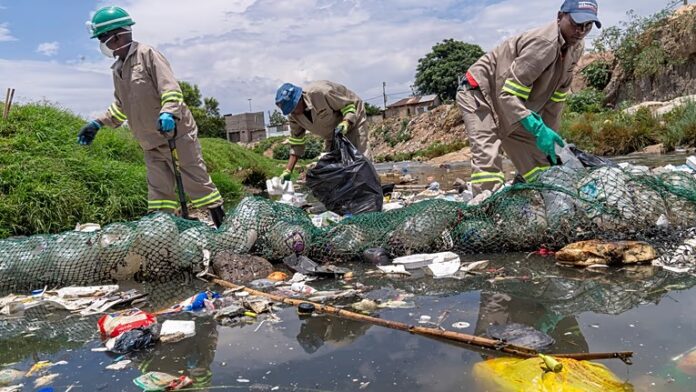
In the heart of Johannesburg’s Alexandra township, a remarkable transformation is underway—one that turns pollution into purpose and waste into wonder. Along the banks of the Jukskei River, sculptures made from discarded tyres, bricks, tree trunks, and rubble now stand as symbols of resilience and creativity.
This is the work of the Alexandra River Collective, a group of 13 local artists who have repurposed river waste into the Alexandra River Creature Series—an imaginative collection of sculptures inspired by the wildlife once thriving in the area. The project is part of SUNCASA (Scaling Urban Nature-Based Solutions for Climate Adaptation in Sub-Saharan Africa), a Canadian-funded initiative focused on rehabilitating urban ecosystems.
One of the artists, Sipho Gwala, draws inspiration from the crabs he saw as a child. Using bricks eroded by the river, he crafts crab sculptures that reflect both environmental decay and artistic rebirth. “It was a collaboration,” Gwala says. “Taking the brick that’s eroded by the river, and then making a sculpture with it.”
The Jukskei River has long suffered from illegal dumping, pollution, and invasive species, contributing to frequent flooding and ecological degradation. But thanks to SUNCASA and the tireless efforts of the Alexandra Water Warriors—a volunteer group of over 3,000 residents—the river is being revived. Since 2019, the Water Warriors have removed debris daily, improving water flow and reducing flood risks.
Co-founder Paul Maluleke explains how the cleanup has also supplied materials for the sculptures. “We use tree logs for repurposing or art installations,” he says, turning obstacles into opportunities.
Multidisciplinary artist Phumzile Sizakele finds healing in the process. Her wooden bird sculptures, inspired by local hadedas, are carved from flood-causing tree trunks. “It’s sort of like therapy for me,” she shares. “I’m allowed to hit as hard as I want, and then create something nice out of it.”
The impact is visible. Over 5,000 trees have been planted, and the riverside park now draws children and families who enjoy the open space and admire the art installations. Youth activist Harry Nakeng celebrates the change: “It’s just amazing that the park is open.”
For Alexandra, the Jukskei River is no longer just a symbol of urban neglect—it’s a canvas for community pride and environmental hope.
